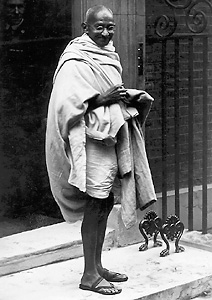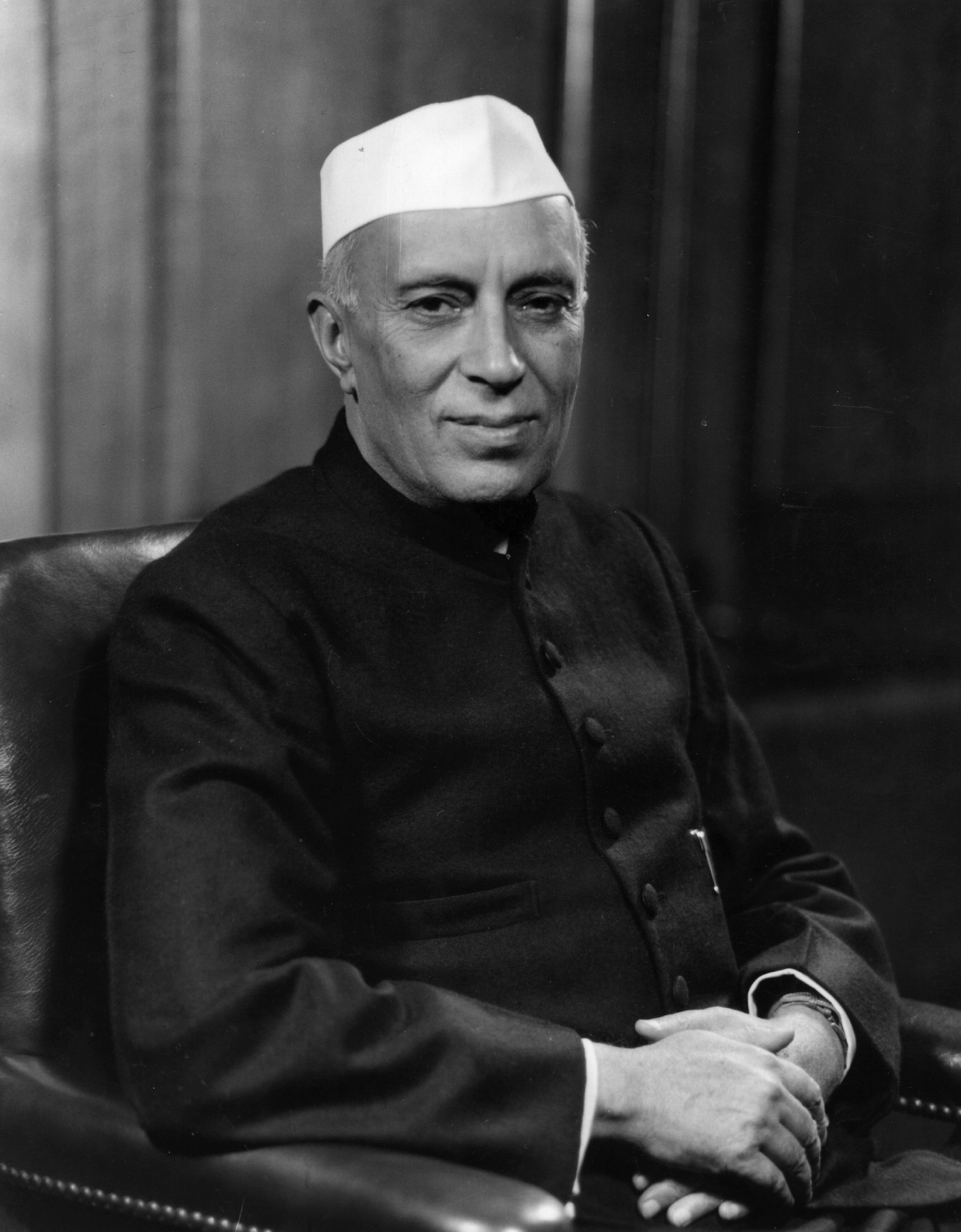Indian National Congress is a political party in India that has traditionally supported liberal policies. It is the oldest political organization in India, having been established in 1885. In the first half of the 1900’s, Congress was a broad-based party that led the movement for India’s independence from the United Kingdom. After India achieved independence in 1947, Congress became a moderate liberal party committed to building a democratic and secular (nonreligious) political system. The party has supported the modernization and development of India through economic planning, large-scale industry, and expansion of the educational system. The party also has supported a policy of nonalignment (neutrality) in international affairs.
Congress has been the ruling party in most of India’s governments since independence. However, the party’s influence has declined since the late 1980’s. Since the late 1960’s, there have also been a number of splinter parties that have had Congress as part of their names.
Organization.
Congress is a highly centralized party. Before Indian independence, the Congress organization extended down to the village level. Each district had a committee that reported to a provincial committee. India’s division into provincial committees was based on regional languages. The provincial committees reported to the All India Congress Committee, a body of about 350 people. The Congress Working Committee was the inner cabinet of the party and was responsible for policy decisions and daily executive administration. The Working Committee was the main negotiator with the British government and with other Indian parties.
After independence, the Pradesh Congress Committee became the center of power in each Indian state. Local units of Congress now correspond to administrative boundaries of districts. The Congress Working Committee and the party president remain at the top of the national party structure.
History.
A group of Indian lawyers and professionals founded the Indian National Congress in 1885. In its early days, Congress gathered and passed on complaints and concerns of the Indian people to the British government. The party had no constitutional role. It met once a year and discussed political and economic reforms, the future of India, and ways for Indians to achieve equal status with the British.
The political and spiritual leader Mohandas K. Gandhi led the transformation of the party into a broad-based political organization. Gandhi became the leader of the Congress Party in 1920. He became famous for leading Indians in a policy of nonviolent resistance to British rule. Another young Indian politician, Jawaharlal Nehru, joined Gandhi. Nehru supported Gandhi’s policies of nonviolent resistance and helped lead the movement for Indian independence.

The independence movement grew stronger in the 1930’s and early 1940’s, and the British government promised India independence after World War II (1939-1945). Denied immediate self-government, members of the Indian National Congress refused to take part in the war. In 1942, Gandhi launched another civil disobedience campaign. The Congress Party passed the “Quit India” resolution in Bombay (now Mumbai) in August 1942, calling for the expulsion of British forces from India. The colonial government arrested the entire Congress leadership and held them until the end of the war.
After India became independent on Aug. 15, 1947, Congress took over the vast institutional British government structure. The British system had extensive networks throughout the country, at both the national and state levels. Congress leader Jawaharlal Nehru became India’s first prime minister in 1947. The Congress Party dominated Indian politics for many years after independence. India’s first general election was held in 1951 and 1952. Congress won about three-fourths of the seats in the Lok Sabha, the more powerful of the two houses of India’s Parliament, and Nehru remained prime minister. Congress also won about three-fourths of the Lok Sabha seats in the national elections of 1957 and 1962. Nehru died in 1964, and that year, the party installed Lal Bahadur Shastri as prime minister of India.

Shastri died in 1966, and there was then a brief leadership struggle within the party. Nehru’s only daughter, Indira Gandhi, emerged as the new prime minister later that year. Congress, led by Indira, remained in power after elections in 1967.
A major split occurred within Congress in 1969. Indira Gandhi led her faction of the party—known as the New Congress Party or Congress-R (the R stood for requisition)—to an overwhelming victory in the 1971 elections. Congress-R won 352 seats—a roughly two-thirds majority—in the Lok Sabha.
Indira Gandhi was popular because she campaigned on a platform of abolishing poverty. But the people’s expectations were not fulfilled. She became increasingly isolated from her own followers. Growing discontent erupted into mass agitation in many parts of the country, leading Indira to authorize a proclamation of emergency rule in June 1975. She had her opponents jailed and imposed strict censorship. The state of emergency was lifted in 1977. But it had provoked widespread opposition, and her party suffered a defeat in the general elections of March 1977. It was reduced to 154 seats in the Lok Sabha.
In 1978, the faction of Congress led by Indira Gandhi became known as Congress-I (the I stood for Indira). It returned to power in 1980, winning 353 seats in the Lok Sabha. Sikh militants assassinated Indira in October 1984. Her son Rajiv Gandhi succeeded her. In December 1984, Congress-I, led by Rajiv, won 404 Lok Sabha seats, an unprecedented majority. However, opposition developed to Rajiv’s centralized leadership style. Corruption scandals, a lack of major policy success, and the formation of a national front of opposition parties caused support for Congress-I to erode. The party lost power in the elections of 1989, winning only 197 Lok Sabha seats.
After those elections, two coalitions of the opposition Bharatiya Janata Party (BJP) disintegrated in less than two years. New elections were called in 1991. In May of that year, during the course of the campaign, Rajiv Gandhi was assassinated, and P. V. Narasimha Rao became head of the Congress-I Party. By this time, the suffix I was being included less and less often in the party’s name. Congress regained power in the 1991 elections. A divided opposition allowed it to win 244 of the 543 elected seats in the Lok Sabha. Rao became prime minister.
Under Rao, the influence and popularity of the Congress Party declined considerably. In elections to the state assemblies, Congress did not fare well. In many states, the voters elected non-Congress governments. The policies of the Rao government aroused considerable opposition within the party and the country. Several splinter factions, including the Indian National Congress-Secular (INC-S) and All India Indira Congress (AIIC), formed in the middle and late 1990’s.
The parliamentary elections in 1996 delivered a decisive defeat to Congress. The party won only 140 seats in the Lok Sabha.
In 1998, the Italian-born Sonia Gandhi, widow of Rajiv Gandhi, was elected president of the Congress Party, succeeding Sitaram Kesri. Sonia Gandhi had first been offered the post of president of the party after her husband’s death in 1991, but she refused it, saying she did not wish to expose her family to further risk. She then came forward as a powerful champion of secular values. She campaigned vigorously against the BJP in its efforts to introduce Hindu nationalist policies into political and public institutions. Congress won 141 Lok Sabha seats in 1998 and 114 seats in the 1999 elections. In both 1998 and 1999, however, the BJP overtook Congress as the single largest party.

Congress returned to power in elections in 2004, winning 145 seats in the Lok Sabha, the most of any single party. The United Progressive Alliance—an alliance of parties led by Congress—won a total of 217 seats. After the elections, other parties pledged support for the Congress-led alliance. Sonia Gandhi was offered the post of prime minister but declined it. Manmohan Singh, a former finance minister, was then named prime minister. In elections in 2009, Congress won 206 seats in the Lok Sabha. The United Progressive Alliance won a total of 262 seats, and Singh remained as prime minister.
In a 2014 election, Congress won only 44 seats in the Lok Sabha. The party lost control of Parliament to the conservative Bharatiya Janata Party. Sonia Gandhi retired as Congress Party leader in 2017 and was succeeded by her son, Rahul. He resigned after the party’s poor results in the 2019 election. Sonia then returned as interim leader of the party.
